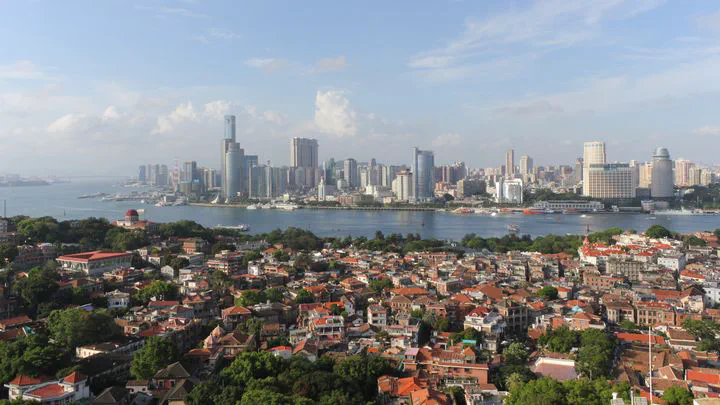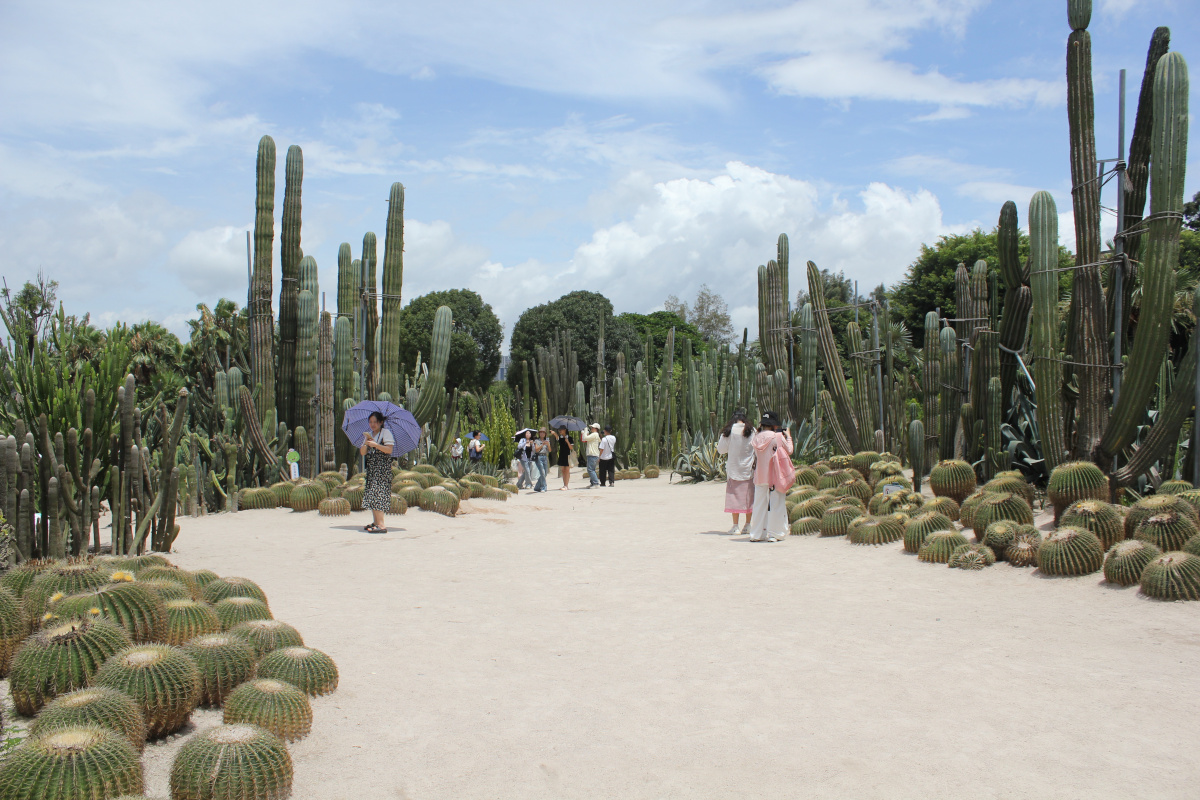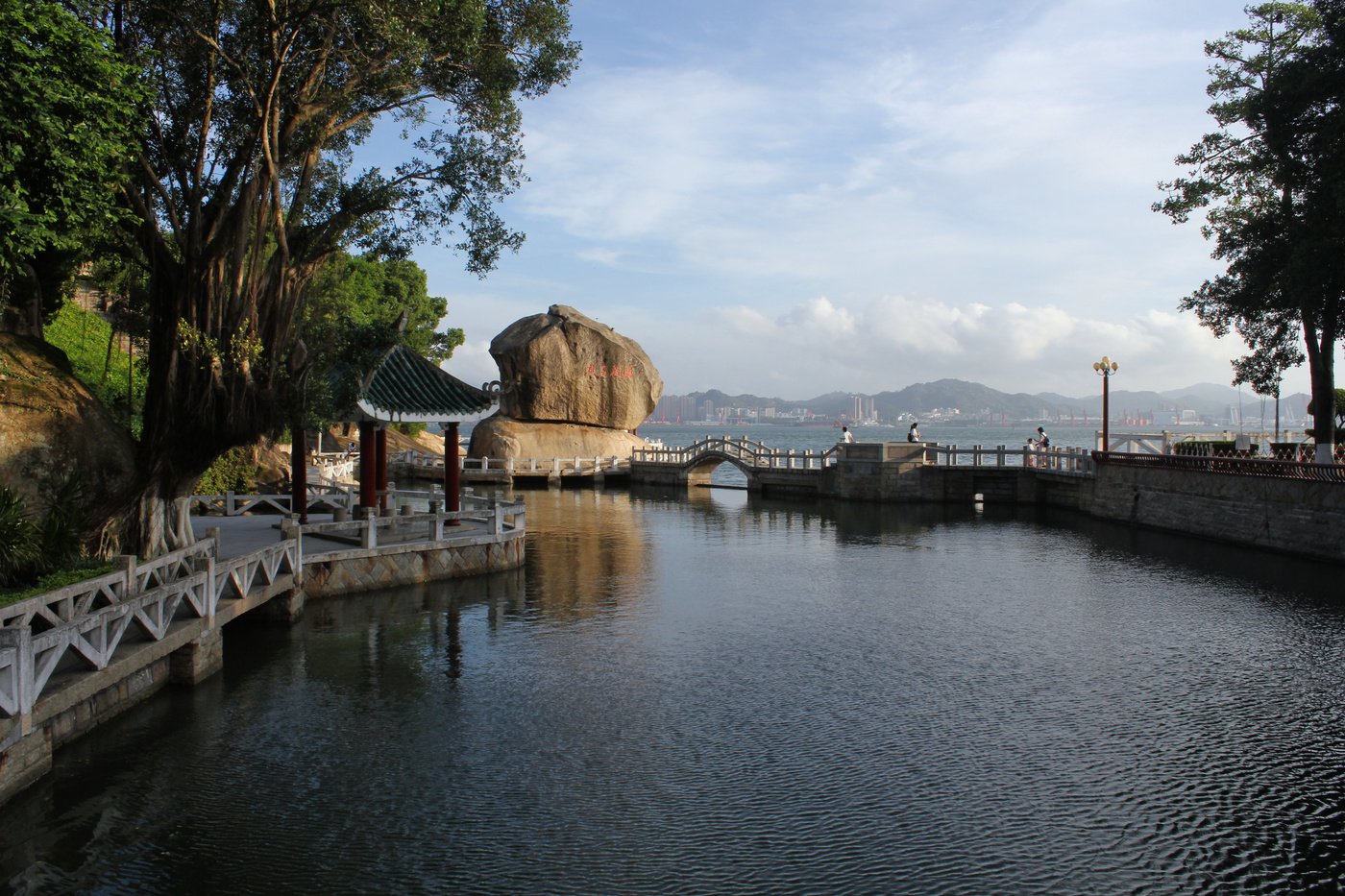Exploring Xiamen on a Short trip

Xiamen (厦门市/廈門) is a coastal city in the southeastern province of Fujian, China. It is located north of Hong Kong and south of Shanghai. Xiamen is well connected to China’s high-speed rail network, with several express train services available. As we had a few days off, my partner and I took the high-speed train from Hong Kong, which arrived at Xiamen North Station in about 3 hours. From there we transferred to the metro, which took us to the city centre on Xiamen Island in less than an hour.
The first day we visited the Xiamen Botanical Garden. The garden has several entrances and we entered through the north entrance. Most tourist attractions in Xiamen require tickets, which can be purchased in advance via WeChat or at ticket booths on site. The Botanical Garden is large and can be explored on foot or by a shuttle bus that circulates around the park. It features a variety of ecosystems, including a subtropical forest, bamboo grove, rose garden and succulent area, as well as tranquil lakes and a tea house. However, the summer heat can make it difficult to explore the full extent of the garden.

We decided to visit one of the temples, Nanputuo Temple (南普陀寺). It is located south of the Botanical Garden near the main campus of Xiamen University. It is a Buddhist temple dating back to the Tang Dynasty (618-907) and is considered one of the four major Buddhist monasteries in Fujian Province. Despite the large number of visitors, the architecture, halls and shrines made it a quiet and relaxing place.
Next we found a nice cafe to cool off in and enjoyed our tea and coffee with a slice of cake. In general, Xiamen seems much more relaxed than Hong Kong. The pace of life seems slower and not as busy as in Hong Kong. Xiamen has a relatively relaxed and pleasant atmosphere.
After our drink, we went to the Overseas Chinese Museum. As a city with a long history as an important port and trading centre, Xiamen has deep ties with the overseas Chinese diaspora. The Overseas Chinese Museum is dedicated to preserving and showcasing the history, culture and contributions of Chinese communities around the world. The museum has a wide range of exhibits that trace the migration, colonial slave trade and settlement of Chinese people in different countries, their economic and social impact, and the development of overseas Chinese identity and traditions.
Finally, we visited the Hulishan Fortress on the south coast of Xiamen Island. The fortress dates back to the late 19th century when it was built by the Qing Dynasty government to defend the city’s strategic harbour from foreign naval threats. In addition to its military history, Hulishan Fortress offers panoramic views of Xiamen’s coastline and the Taiwan Strait in the distance.

The next day we set off for Gulangyu, a small island (鼓浪屿/嶼) across the Lujiang River from Xiamen. Characterised by its unique baroque, neoclassical and Mediterranean architecture, the island was once an international settlement and is now a popular tourist destination. The island is home to churches, museums and historical sites that reflect its multicultural history and offer visitors a glimpse into China’s past. It can be reached by ferry, which should be booked in advance. The journey to the island can be a bit chaotic as the ferry is full of tourists (locals have their own ferry port). The pedestrian-only island can be explored on foot, and we managed to climb the small hill (Sunlight Rock 日光岩) just before sunset for an excellent view of the island and Xiamen. In addition to the other historical sites, there are several beaches to explore and many seaside restaurants to enjoy.
All in all, Xiamen is a city well worth exploring if you have some spare time in China. It has a rich cultural background, historical sites, but also beautiful scenery and seaside to explore.